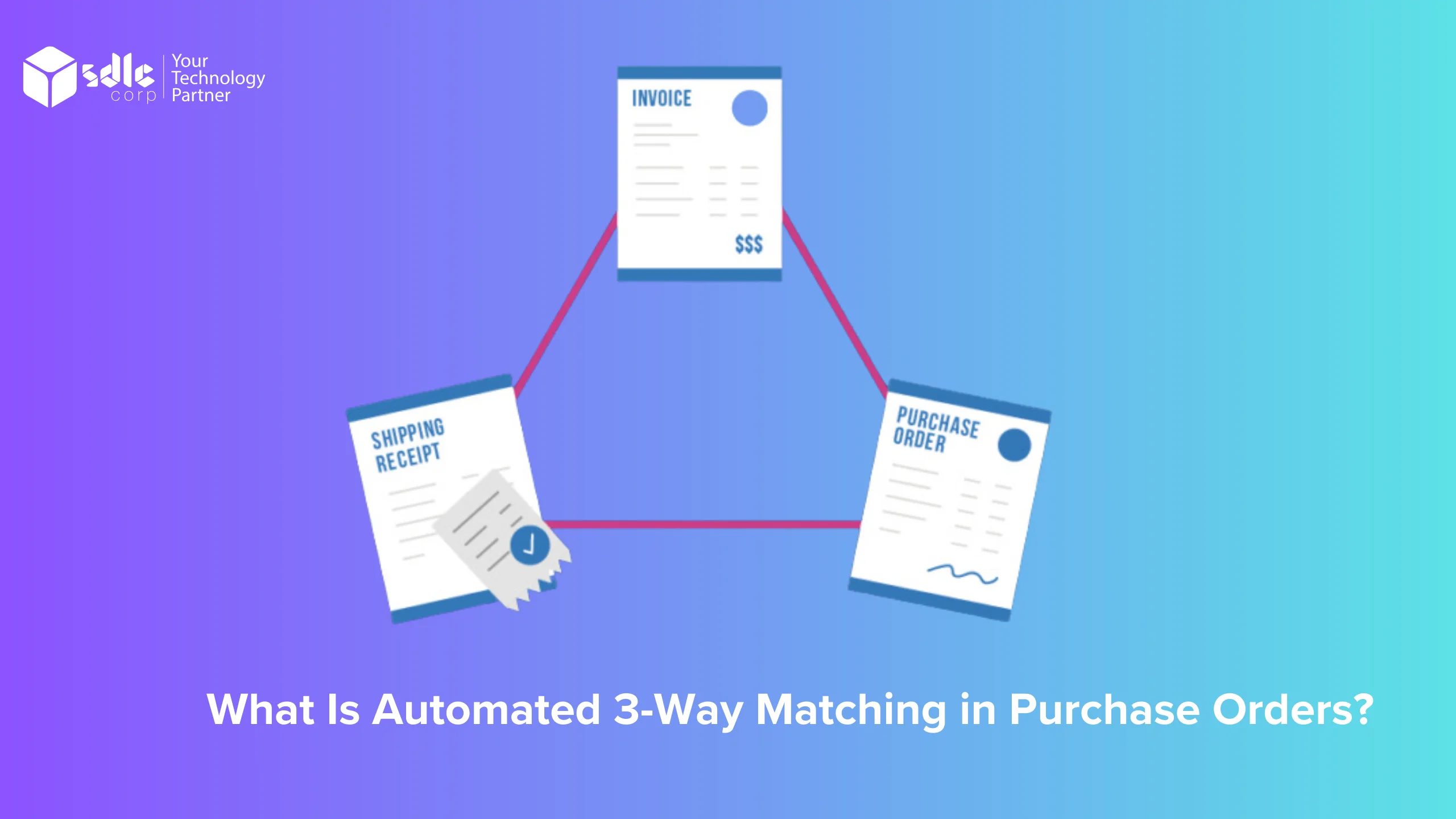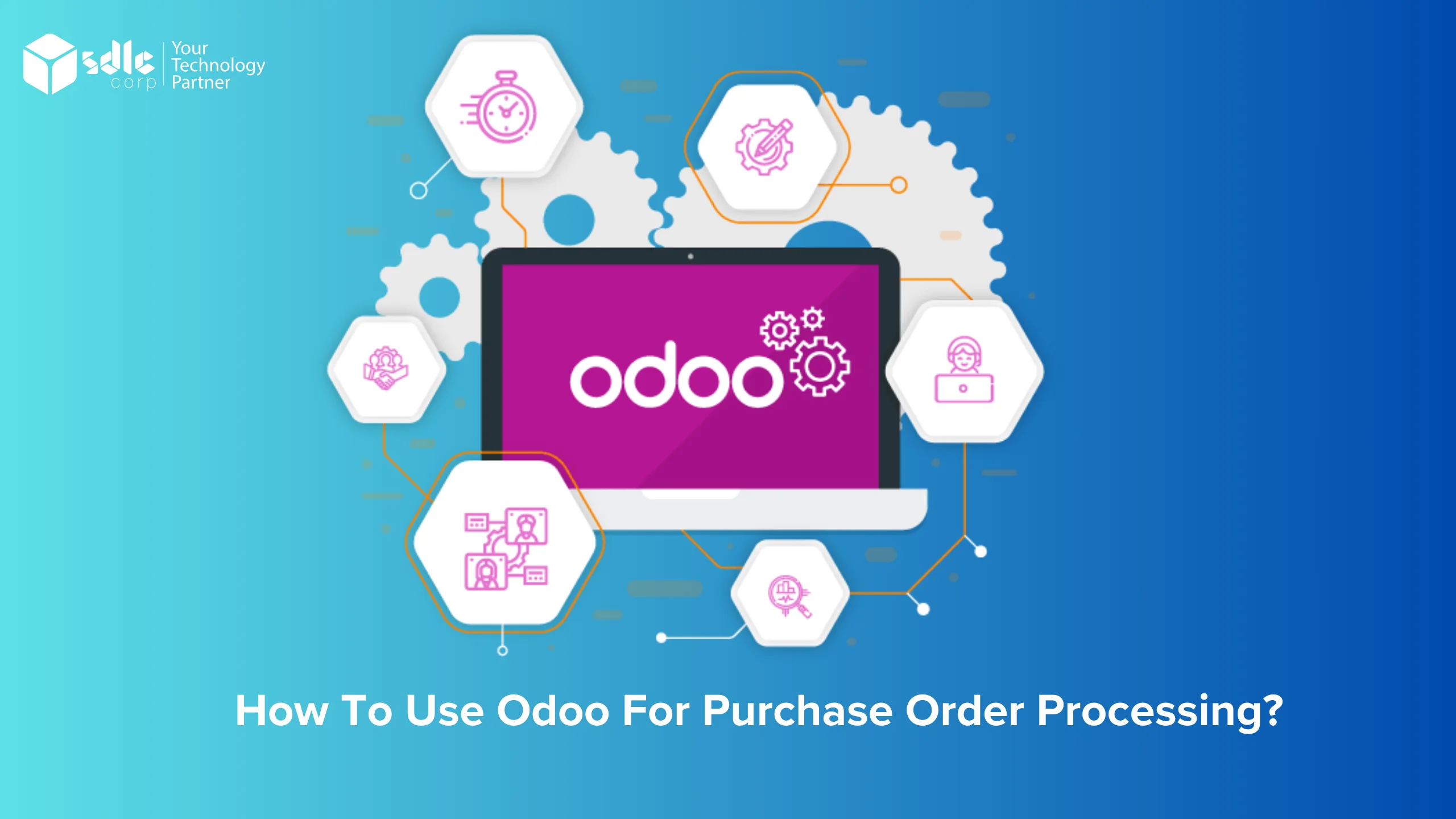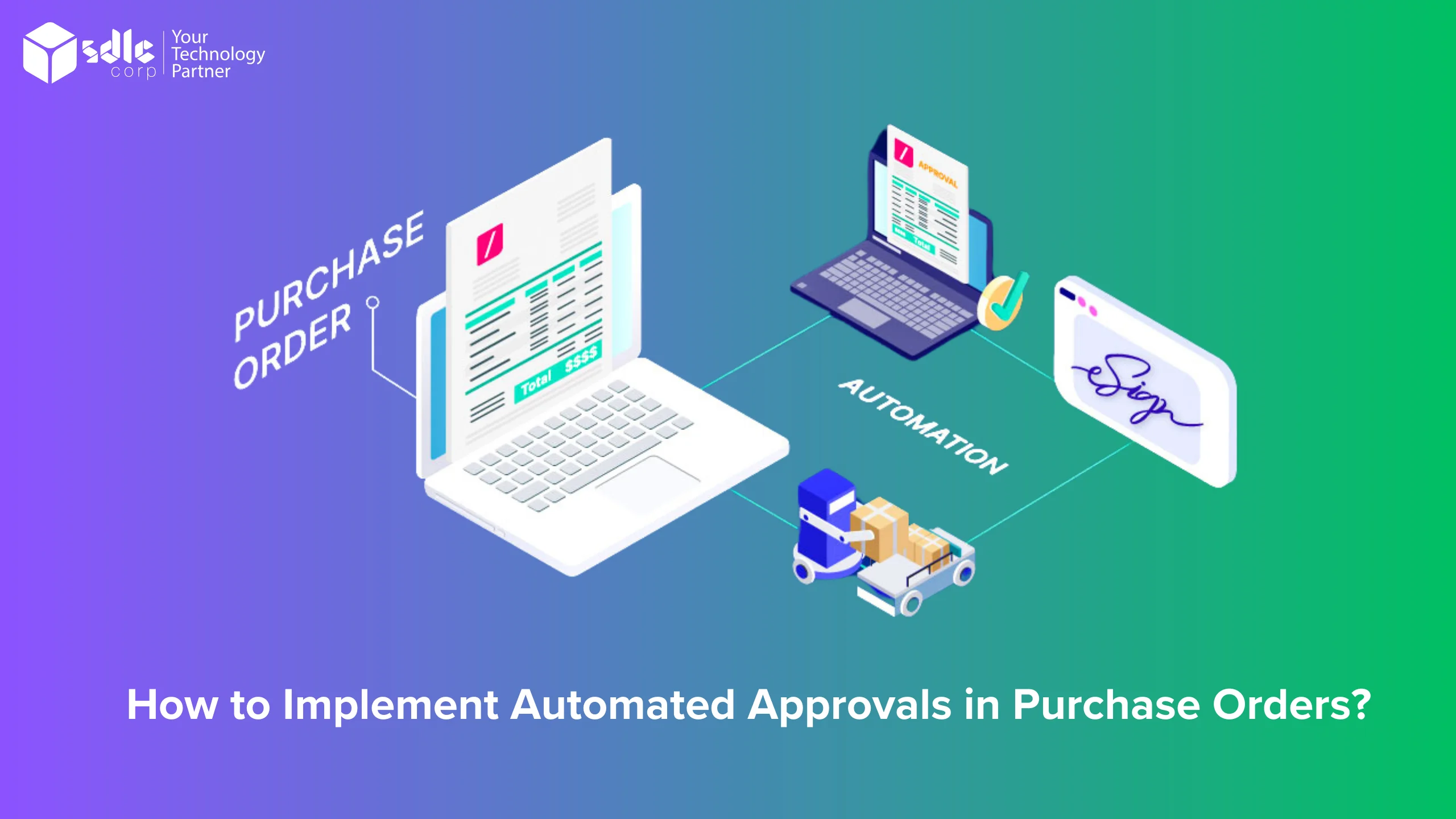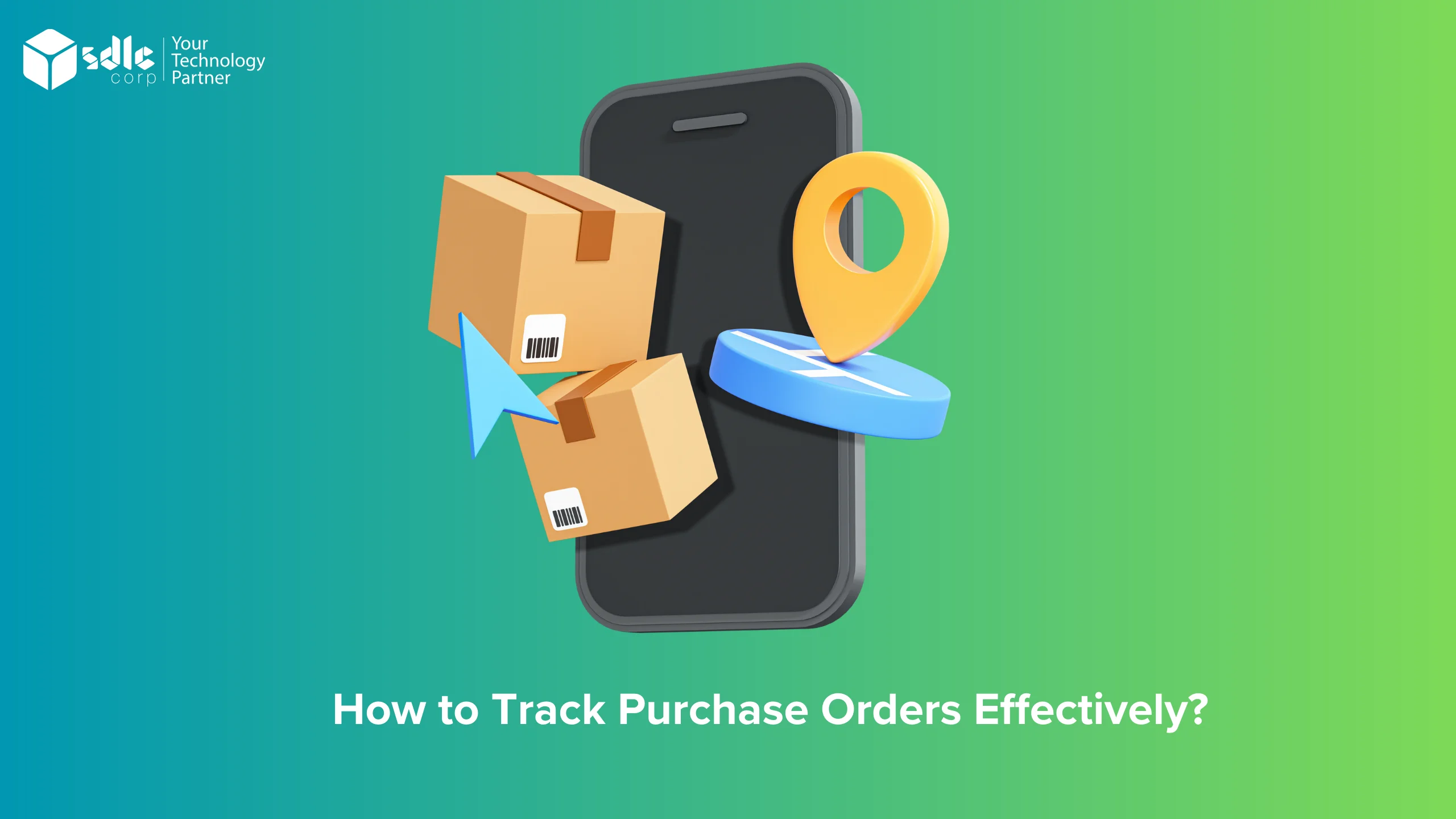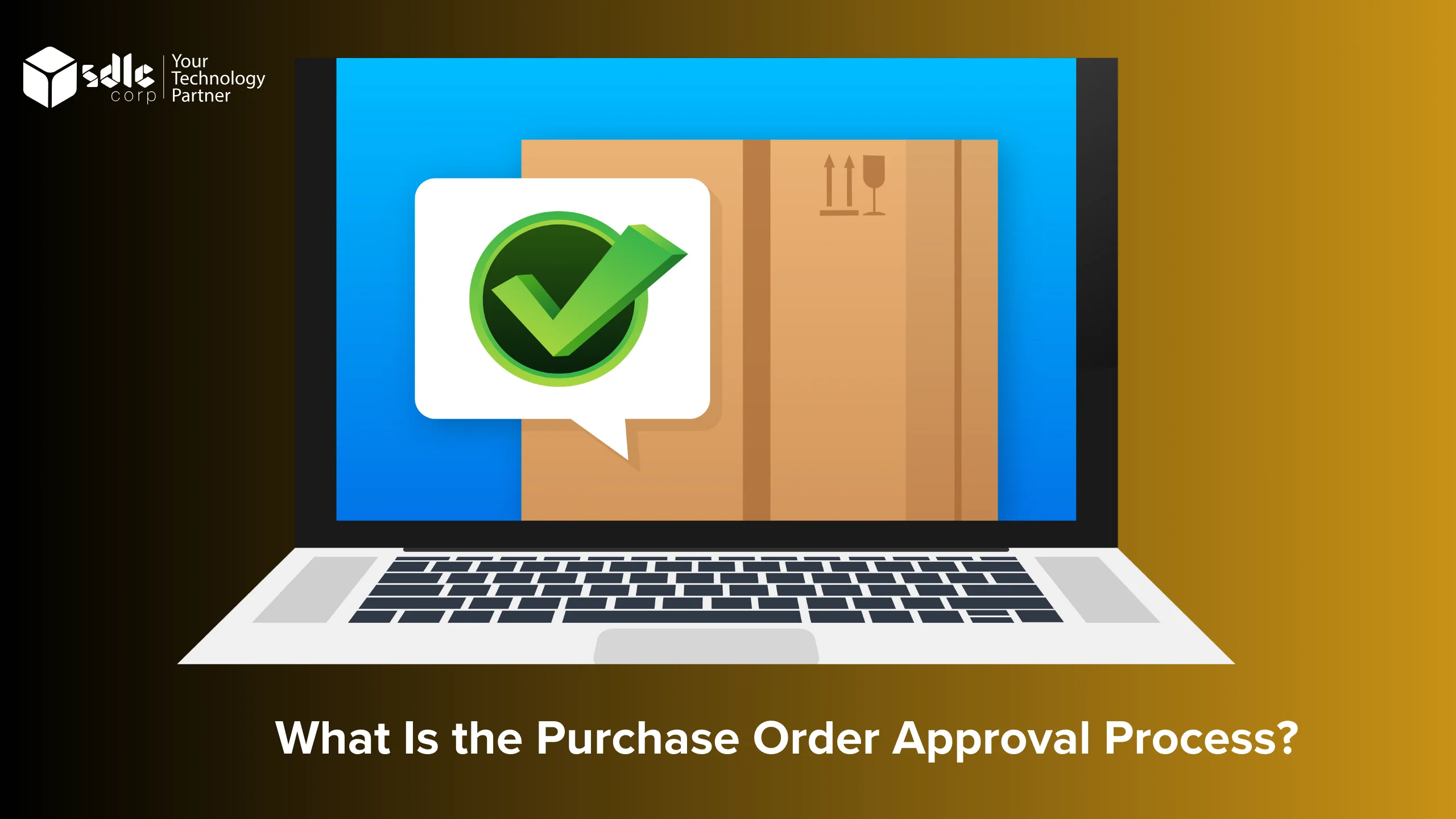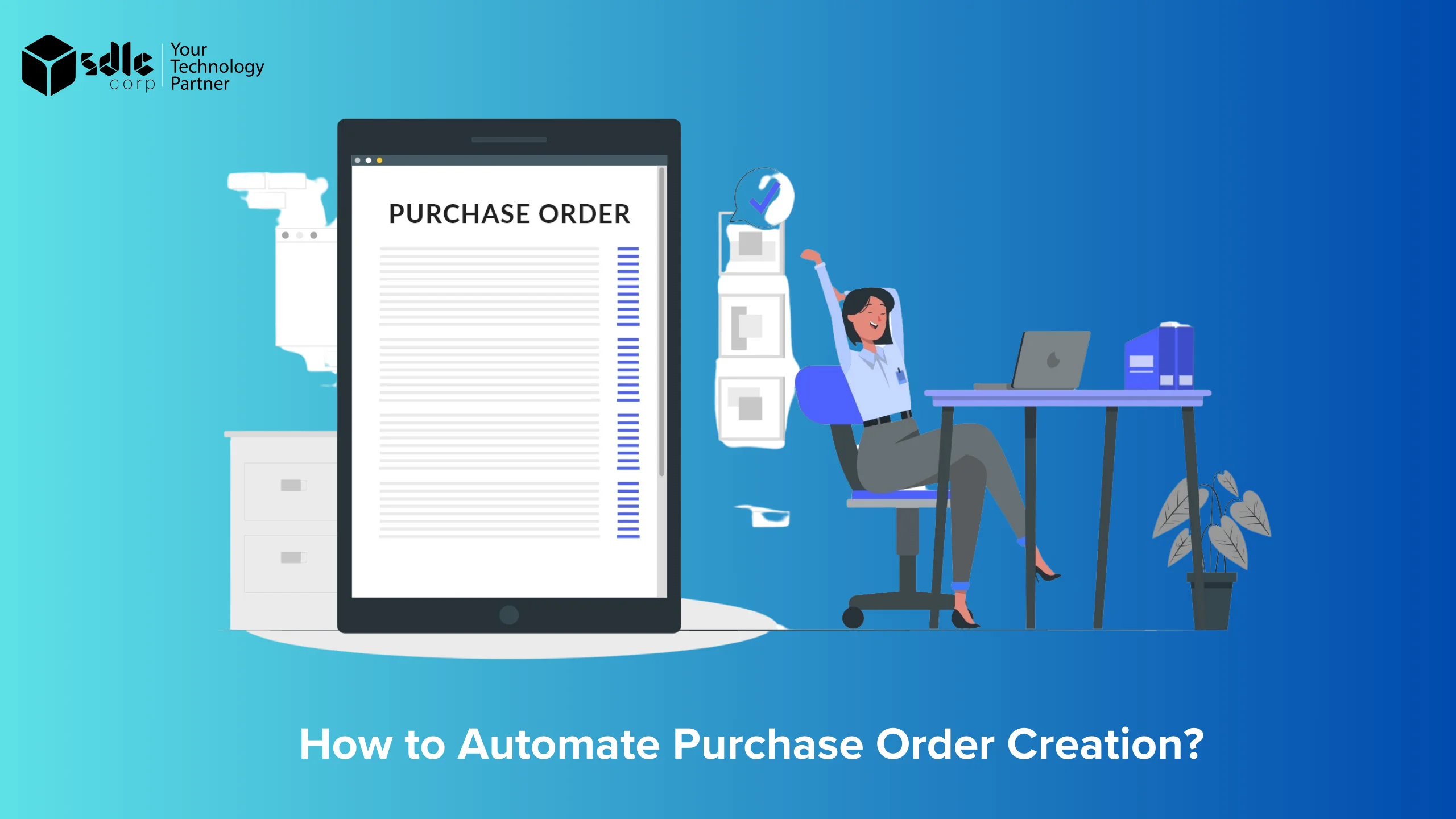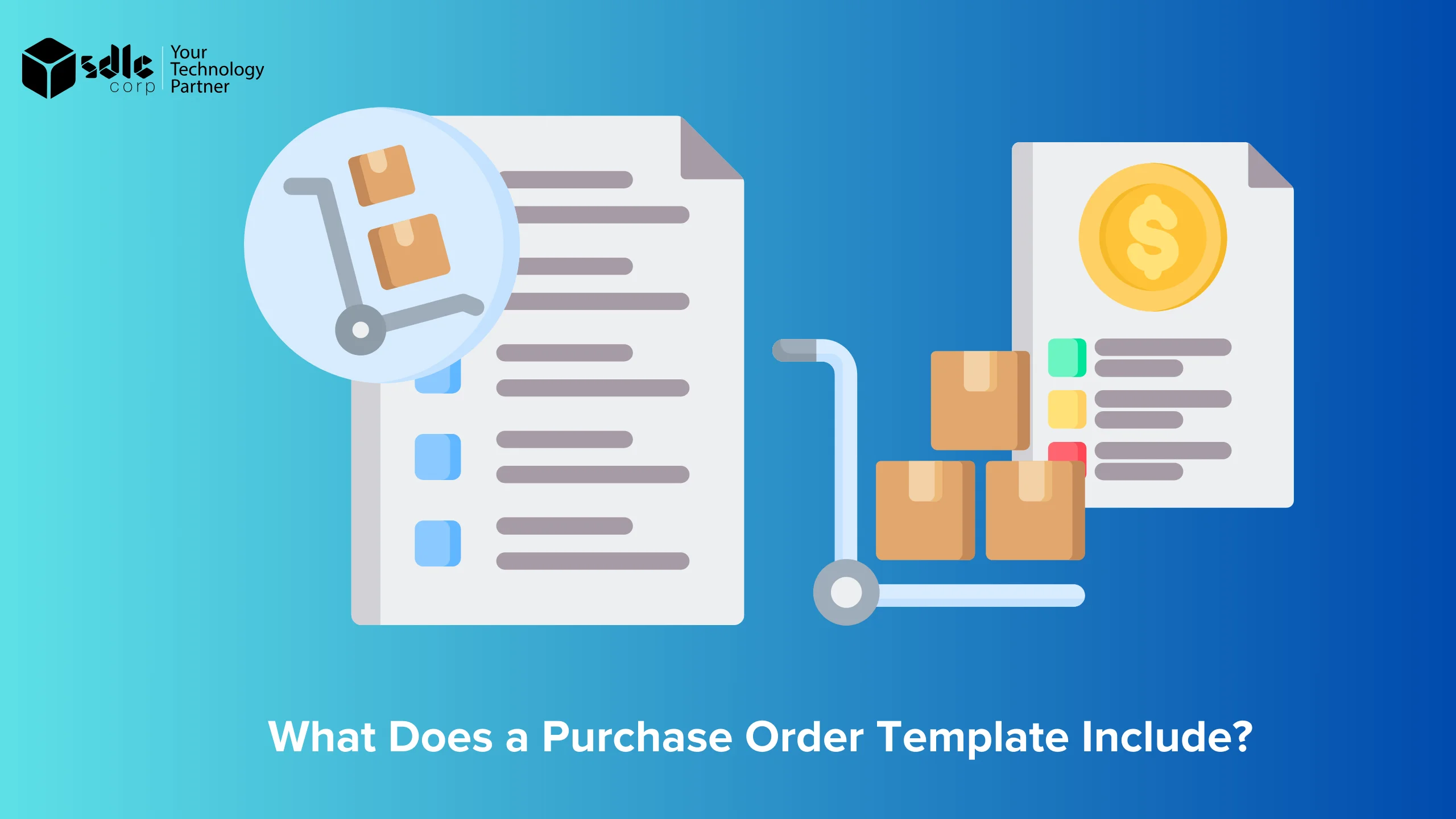Introduction
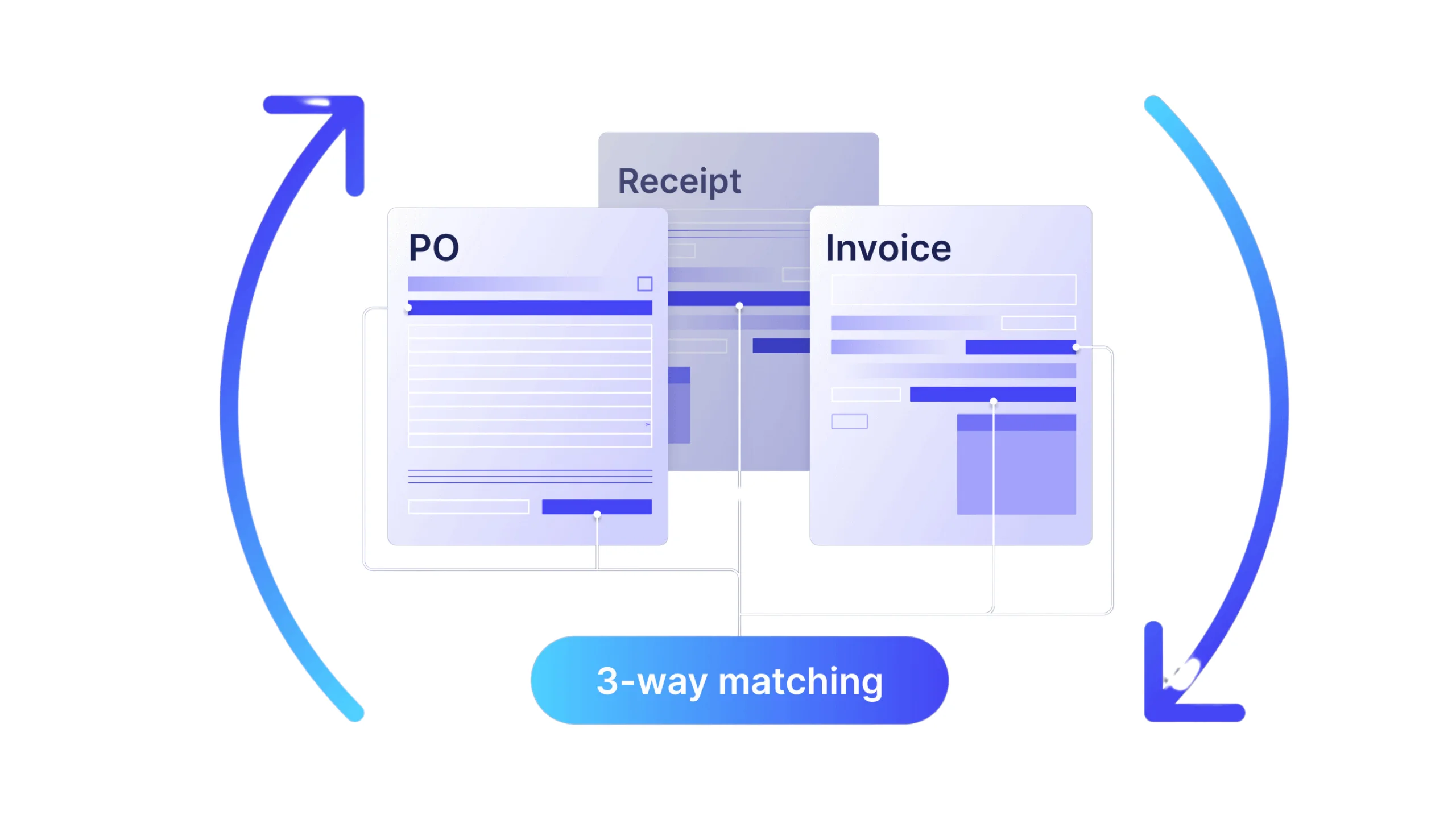
Automated 3-way matching is a process used in procurement and accounting to verify that a purchase order (PO), a receiving report, and an invoice match and align correctly. The three documents involved are:
1. Purchase Order (PO)
Implement a robust system to create and manage POs. This can be a dedicated software, an enterprise resource planning (ERP) system, or even a well-organized spreadsheet. Ensure the system can track PO numbers, dates, items ordered, quantities, prices, and vendor information.
2. Receiving Report
Also known as a goods receipt or receivable note, this document is created by the receiving department when goods are physically received. It details the quantities and condition of the items received.</span
3. Invoice
The 3-way matching process involves comparing these three documents to ensure that they all correspond to the same transaction. Here’s how the process works:
1. Matching PO to Receiving Report
The first step is to compare the details on the PO with the receiving report. The quantity and description of the items received should match what was ordered on the PO. Any discrepancies, such as missing items or incorrect quantities, are noted and investigated.
2. Matching Receiving Report to Invoice
3. Matching PO to Invoice
1. Efficiency
2. Accuracy
3. Visibility
4. Compliance
How does three-way matching work?
Three-way matching is a process used in procurement and accounting to verify that a purchase order (PO), a receiving report, and an invoice match and align correctly.
The process begins with the creation of a purchase order by the buyer, which details the goods or services to be purchased from a supplier. When the goods are received, the receiving department creates a receiving report, noting the quantity and condition of the items received.
Finally, the supplier sends an invoice to the buyer for payment. The three-way matching process involves comparing these three documents to ensure they all correspond to the same transaction.
The buyer compares the details on the PO to the receiving report to verify that the goods received match what was ordered. Then, the buyer compares the receiving report to the invoice to ensure that the invoice matches the goods received. Finally, the buyer compares the details on the invoice to the original PO to ensure that the invoice matches the terms of the purchase. If all three documents match, the invoice is approved for payment. If there are discrepancies, the buyer investigates and resolves them with the supplier before approving the invoice for payment.
What are the benefits of automating three-way matches in Purchase order?
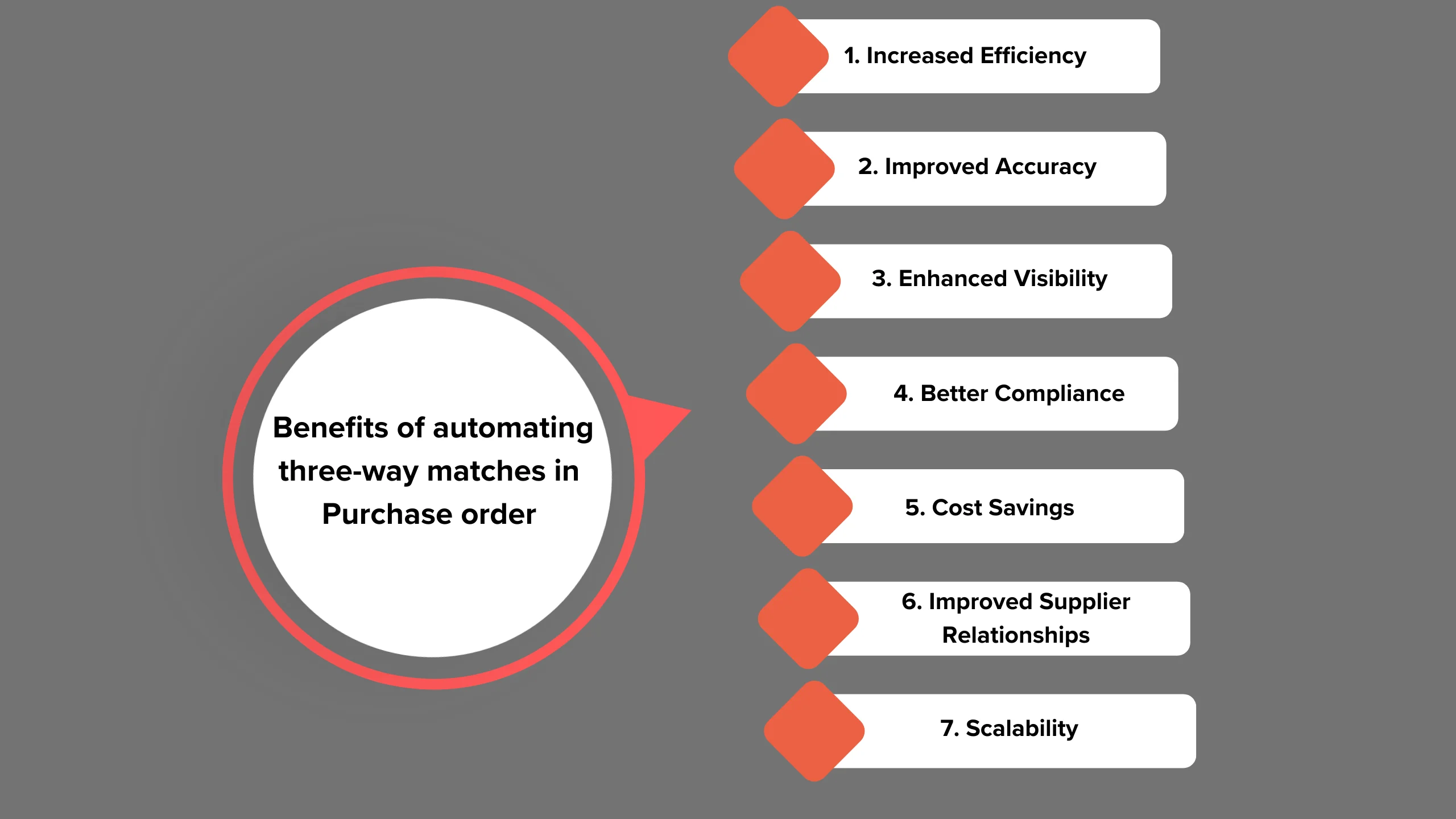
Automating the three-way match process in purchase orders offers several benefits for businesses, including increased efficiency, improved accuracy, enhanced visibility, better compliance, and cost savings. Here’s a closer look at these advantages:
1. Increased Efficiency
Automating the three-way match process streamlines the matching of purchase orders, receipts, and invoices, reducing the time and effort required to process each transaction. Automation eliminates manual data entry and reconciliation tasks, allowing employees to focus on more strategic activities. This efficiency improvement leads to faster processing times, shorter cycle times, and ultimately, a more agile procurement process.
2. Improved Accuracy
Manual matching of purchase orders, receipts, and invoices is prone to errors, such as data entry mistakes, misinterpretation of documents, and duplication of efforts. Automating the matching process reduces these errors by eliminating manual intervention. Automated systems can match documents more accurately and quickly, reducing the risk of overpayments, duplicate payments, and other costly mistakes.
3. Enhanced Visibility
Automated three-way match systems provide real-time visibility into the status of purchase orders, receipts, and invoices. This visibility allows stakeholders to track the progress of transactions, identify bottlenecks, and take corrective actions as needed. With automated systems, stakeholders can access up-to-date information on purchase orders, receipts, and invoices, improving decision-making and collaboration across departments.
4. Better Compliance
Automating the three-way match process helps ensure compliance with internal policies and external regulations. Automated systems can enforce business rules and validation checks, such as matching purchase orders to receipts and invoices, ensuring that transactions are processed correctly and in accordance with company policies and regulatory requirements. This reduces the risk of non-compliance and associated penalties.
5. Cost Savings
Automating the three-way match process can lead to significant cost savings for businesses. By reducing manual effort and errors, businesses can lower processing costs, reduce the need for rework, and avoid costly mistakes, such as overpayments and duplicate payments. Additionally, automated systems can help businesses negotiate better terms with suppliers, optimize inventory levels, and improve cash flow management, leading to further cost savings.
6. Improved Supplier Relationships
Automating the three-way match process can also improve supplier relationships. By processing invoices more quickly and accurately, businesses can pay suppliers on time, improving supplier satisfaction and fostering stronger relationships. Automated systems can also provide suppliers with real-time visibility into the status of their invoices, reducing inquiries and disputes.
7. Scalability
Automated three-way match systems are scalable and can handle large volumes of purchase orders, receipts, and invoices. As businesses grow, automated systems can easily accommodate increased transaction volumes without requiring additional resources or infrastructure. This scalability allows businesses to expand their operations without compromising efficiency or accuracy.
Enhance Your Procurement Accuracy!

What are the challenges in automating three-way match in Purchase order?
Automating the three-way match process in purchase orders can be a complex task, and several challenges must be addressed to ensure successful implementation. Some of the key challenges include:
1. Data Quality
2. Integration
3. Complexity
4. Change Management
5. Cost
6. Vendor Readiness
7. Regulatory Compliance
Automating the three-way match process requires compliance with various regulatory requirements, such as data privacy, security, and financial reporting standards. Businesses need to ensure that their automated processes adhere to these regulations to avoid legal and financial consequences.
Optimize Your Purchase Order Management!

Conclusion
Automated 3-way matching in purchase orders is a process that uses software to compare three key documents in the procurement process: the purchase order (PO), the receiving report, and the supplier invoice. The goal is to verify that the details on these documents match and align correctly, ensuring that the company pays the correct amount for the goods or services received. Automated 3-way matching offers several benefits, including increased efficiency, improved accuracy, enhanced visibility, better compliance, cost savings, improved supplier relationships, and scalability. However, it also poses challenges such as data quality, integration, complexity, change management, cost, vendor readiness, and regulatory compliance. Despite these challenges, automating the three-way match process can significantly streamline procurement processes and improve overall operational efficiency.
Secure Your Procurement Process!

FAQS
1. What are the benefits of automated 3-way matching?
- The benefits of implementing automated approvals in purchase orders include faster processing times, reduced errors, improved compliance with purchasing policies, better visibility into purchasing activities, and cost savings through increased efficiency.
2. How does automated 3-way matching differ from manual matching?
- Manual matching requires employees to manually compare the purchase order, receipt, and invoice, which can be time-consuming and prone to errors. Automated matching uses software to perform these comparisons quickly and accurately.
3. Is automated 3-way matching suitable for all businesses?
- Automated 3-way matching is most beneficial for businesses with a high volume of purchase orders and invoices. Smaller businesses with fewer transactions may find manual matching to be more cost-effective.
4. What challenges does automated 3-way matching address?
Automated 3-way matching addresses challenges such as manual errors, invoice discrepancies, late payments, and fraud by automating the reconciliation process and flagging any discrepancies for review.
5.How can organizations implement automated 3-way matching?
- Organizations can implement automated 3-way matching by leveraging purchase order management software or enterprise resource planning (ERP) systems that offer built-in matching capabilities. These systems automate the matching process, streamline invoice approval workflows, and provide real-time visibility into purchasing activities.
Contact Us
Let's Talk About Your Project
- Free Consultation
- 24/7 Experts Support
- On-Time Delivery
- sales@sdlccorp.com
- +1(510-630-6507)
jahir
Subscribe Our Newsletter
Request A Proposal
Contact Us
Let's Talk About Your Project
- Free Consultation
- 24/7 Experts Support
- On-Time Delivery
- sales@sdlccorp.com
- +1(510-630-6507)

Dubai:

Australia:

India:

Qatar:
- Poker Game Development
- Casino Game Development
- Rummy Game Development
- Ludo Game Development
- Sports Betting App Development
- BC Game Clone
- Roulette Game Development
- Real Money Game Development
- Andar Bahar Game Development
- Game development
- Chess Game Development
- Bingo Game Development
- Unity Game Development
- Mobile Game Development
- Android Game Development

